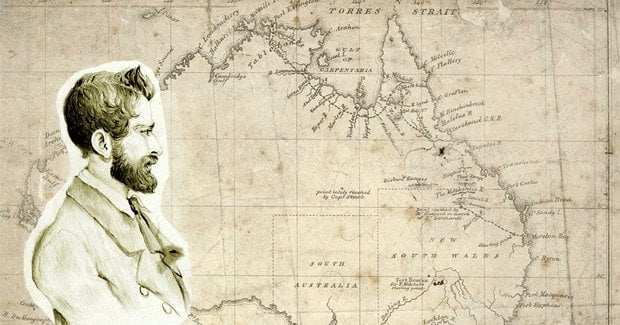Tasman undertook remarkable voyages that expanded the world’s understanding of the Pacific region. His expeditions to the uncharted lands of Australia, New Zealand, and other Pacific islands contributed to our knowledge of geography, cartography, and the diverse cultures that inhabited these lands. This article delves into the life, voyages, and enduring legacy of Abel Tasman, a pioneer in the exploration of the Pacific.
Born in 1603 in Lutjegast, Netherlands, Abel Tasman developed a fascination with the sea from an early age. His skills in navigation and cartography propelled him into the service of the Dutch East India Company, an influential trading company at the time. Tasman’s expertise and experience would soon pave the way for his renowned voyages.
In 1632, Tasman embarked on his first major expedition, sailing to the island of Mauritius in the Indian Ocean. The voyage provided him with valuable experience in navigating treacherous waters and dealing with the diverse challenges of long-distance seafaring. Tasman’s successful navigation of these regions earned him recognition among his peers.
In 1642, Tasman led a historic voyage aboard the Heemskerck and the Zeehaen. Commissioned by the Dutch East India Company, Tasman’s mission was to explore and discover new lands in the South Pacific. Accompanied by the talented cartographer Franz Visscher, the expedition set sail, venturing into the unknown.
Discovery of Tasmania:
During his first major voyage, Tasman sighted and charted the land that would later be named Tasmania. In November 1642, he made landfall and encountered the Indigenous people of the region, believed to be the Palawa or Tasmanian Aboriginal community. Tasman’s interaction with the Indigenous people was limited, but his discovery paved the way for future exploration and colonization.
One of Tasman’s most significant achievements was his first documented encounter with the land we now know as New Zealand. In December 1642, Tasman sighted the western coast of the South Island, which he named Staten Landt. He then sailed along the northern coast, charting and naming various landmarks, including Cape Maria van Diemen and Three Kings Islands. Tasman’s encounters with the Indigenous Māori people were brief and marked by initial hostility.
In 1644, Tasman embarked on a second major expedition, this time to explore the northern and western coasts of Australia. His encounters with the Indigenous communities along these coasts were challenging, often resulting in violent clashes. The expedition’s primary objective was to establish trading relations and seek potential resources for the Dutch East India Company.
Abel Tasman’s voyages had a profound impact on cartography, geography, and the European understanding of the Pacific region. His meticulous mapping and naming of newly discovered lands left a lasting legacy. The names he bestowed upon these regions, such as Van Diemen’s Land (later renamed Tasmania) and New Zealand (after the Dutch province of Zeeland), continue to bear his imprint.
Tasman’s expeditions also paved the way for future explorations and colonization in the Pacific. His meticulous charts and reports provided valuable information for subsequent European explorers and navigators, shaping their understanding of the vast and diverse Pacific region. Tasman’s discoveries sparked further interest in the exploration and colonization of these newly found lands.
Abel Tasman’s contributions to exploration are commemorated through various landmarks, institutions, and namesakes. The Abel Tasman Museum in Lutjegast, Netherlands, celebrates his life and achievements. Additionally, places such as Tasman Glacier, Tasman Peninsula, and the Tasman Sea bear his name, ensuring that his legacy remains alive.
Conclusion:
In conclusion, Abel Tasman’s voyages expanded the frontiers of knowledge and paved the way for European exploration and colonization in the Pacific. His meticulous charting, discoveries of Tasmania and New Zealand, and encounters with Indigenous peoples contributed to our understanding of geography, cartography, and the diverse cultures inhabiting these lands.
Tasman’s explorations left an indelible mark on the history of maritime exploration. His legacy can be seen in the names of landmarks and regions, which continue to honor his contributions. As we reflect on the life and voyages of Abel Tasman, we acknowledge his pioneering spirit, navigational expertise, and the enduring impact of his exploration on our understanding of the Pacific and its rich cultural heritage.
References:
- Hocken, T. M. (1898). Contributions to the Early History of New Zealand (Vol. 1). Otago Daily Times and Witness Newspapers Co.
- Oliver, W. H. (2008). Abel Tasman: New Zealand’s Greatest Explorer. Penguin Group.
- Simmons, D. R. (2007). Abel Tasman: Mapping the Southern Lands. National Library of Australia.
- Kaan, F. (1998). A Voyage Round the World: Abel Janszoon Tasman’s Journal 1642-1643. University of Oklahoma Press.
- Buist, A. G. (1979). Abel Janszoon Tasman: His Life and Voyages. Utrecht.
- Shnukal, A. (1996). The Social Archaeology of Australian Indigenous Societies. Aboriginal Studies Press.
- Duyker, E. (2006). Mirror of the Australian Navigation by Jacob Le Maire: A Facsimile of the ‘Spieghel der Australische Navigatie…’. Hordern House.


